The Falklands – an area the size of Wales, is an an archipelago in the South Atlantic Ocean on the Patagonian Shelf, 300 miles off the mainland coast of South America and is made up of over 778 islands. This is where we landed after a month at sea, to repair our cracked ocean racing boat in the Falklands.
Being british, its a great place to feel like home with cold weather and english breakfasts, but I can’t say everyone felt the same. As soon as we had landed we passed through customs, getting our penguin passport stamp (very cute) and then we set on solving our boat issue. Luckily for us, the Falklanders are incredibly helpful people. Living in a remote community, they have managed to become resourceful and after helping multiple stranded boats over the years, they were well versed in helping broken race yachts.
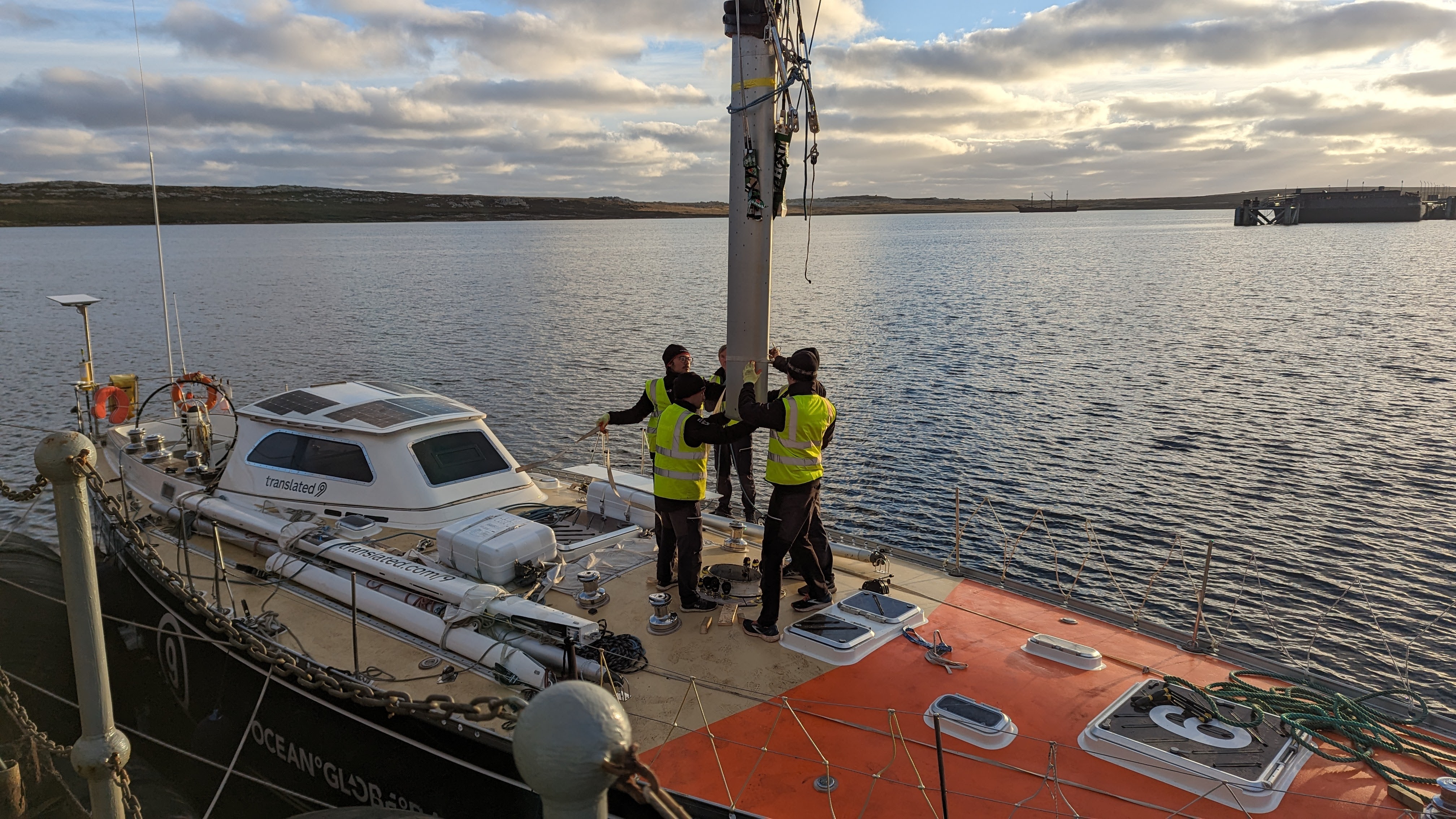
First we met Paul and Sally, two islanders connected to sailing through friends and time on the Falklands. They helped us get the boat to a shipyard 10 minutes out of town and a hotel for the team nearby. I think after so long offshore, it was strange to suddenly be on land again, but we had to move quickly. With pictures of the crack sent to engineers abroad, the decision was to lift the boat to repair it, refibreglassing the area of the crack before getting the boat back to Uruguay if we could. But for this to happen a series of things had to work:
- Rigs lifted and removed from the boat
- Boat cradle sourced and fitted for the boat
- Boat lifted onto cradle
- Fibreglass specialists arriving from Europe
- Fibreglass materials shipped to the Falklands
- Boat relifted, rigs back in and everything sorted without any breakages
It was a big job list, and with the start on the 4th March, the boat would have to be sailing at the latest by the 24th Febuary.
Of course, racing wouldn’t be racing without an endless stream of upcoming issues from start to finish. The crane, unable to reach the boat had to cancel, and force 10 winds prevented anything from being lifted until 4 days later, cutting our short time even shorter. To make matters worse, the fibreglass would have to be flown in with the fibreglassers, who later canceled due to lack of passports. This would be the most expensive fibreglass in Ocean Race history!
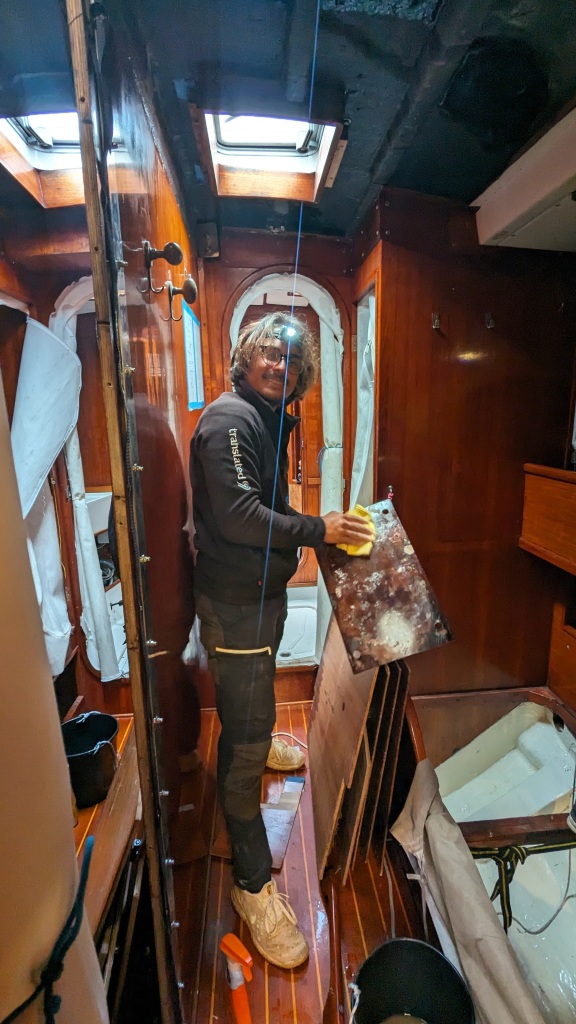


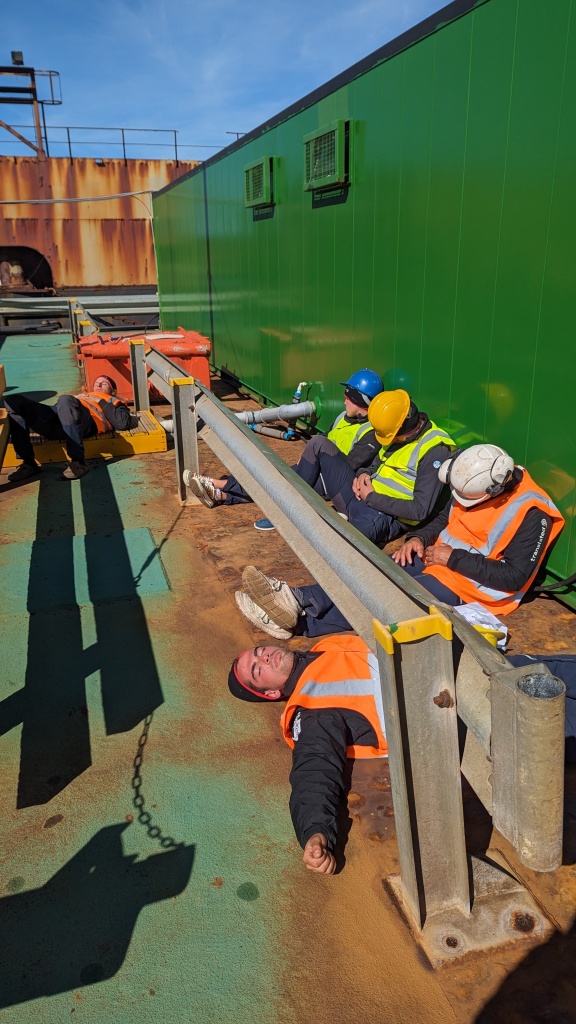
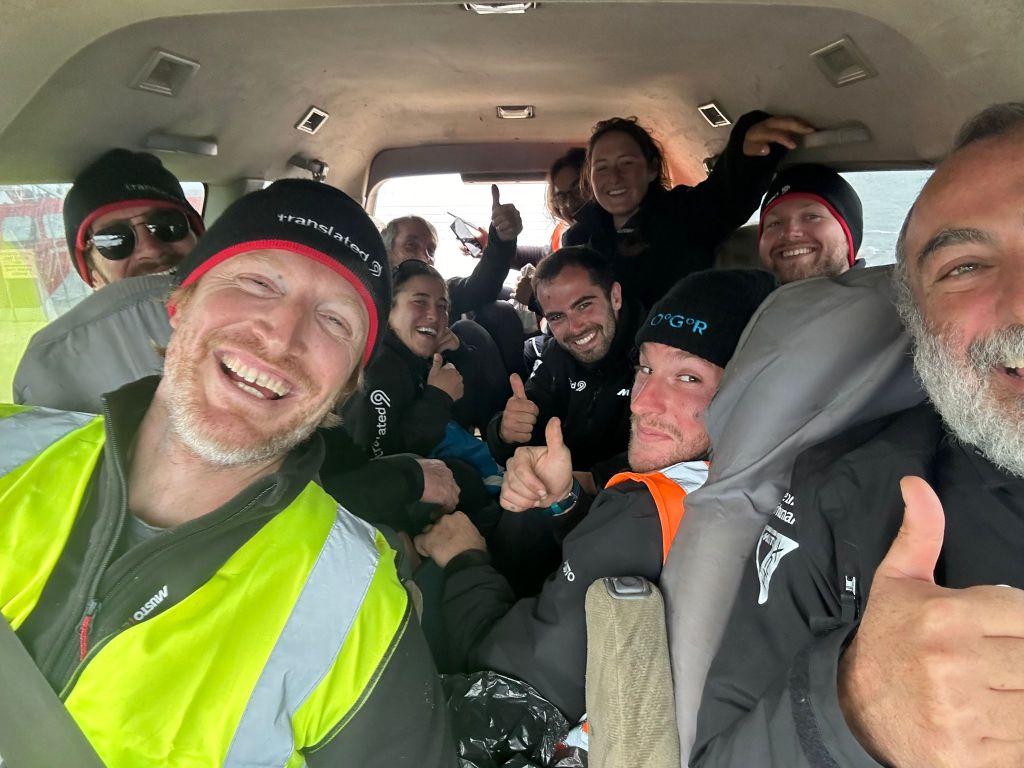
Eventually, things started getting better, the cargo ship next door could lift us using the crane onboard and the guys in the shipyard were able to weild us a cradle that could hold the 35 tonne boat out of an old one found in a boat yard. Rigs out using a mobile crane and we were on the move. Next step was to grind out the bottom of the boat and refibreglass it.
During this process, it was also found that the mast fitting in the deck would have to be refibreglassed and a crack on the rig re-weilded, but otherwise things were going smoothly. We had three professionals from the UK flown in to help with the fibreglassing. Now it was time to repair the sails – we had wear and tear from the last leg, and since we had no sewing maching, we would have to hand stitch everything.
Using a local hall, the sails were laid out and I took lead on sail repair. 5 days of hand stitching later and the sails were ready to go – grateful that we got permission to take them off the boat from the race organisers, but it took me at least a week to feel my fingers again!
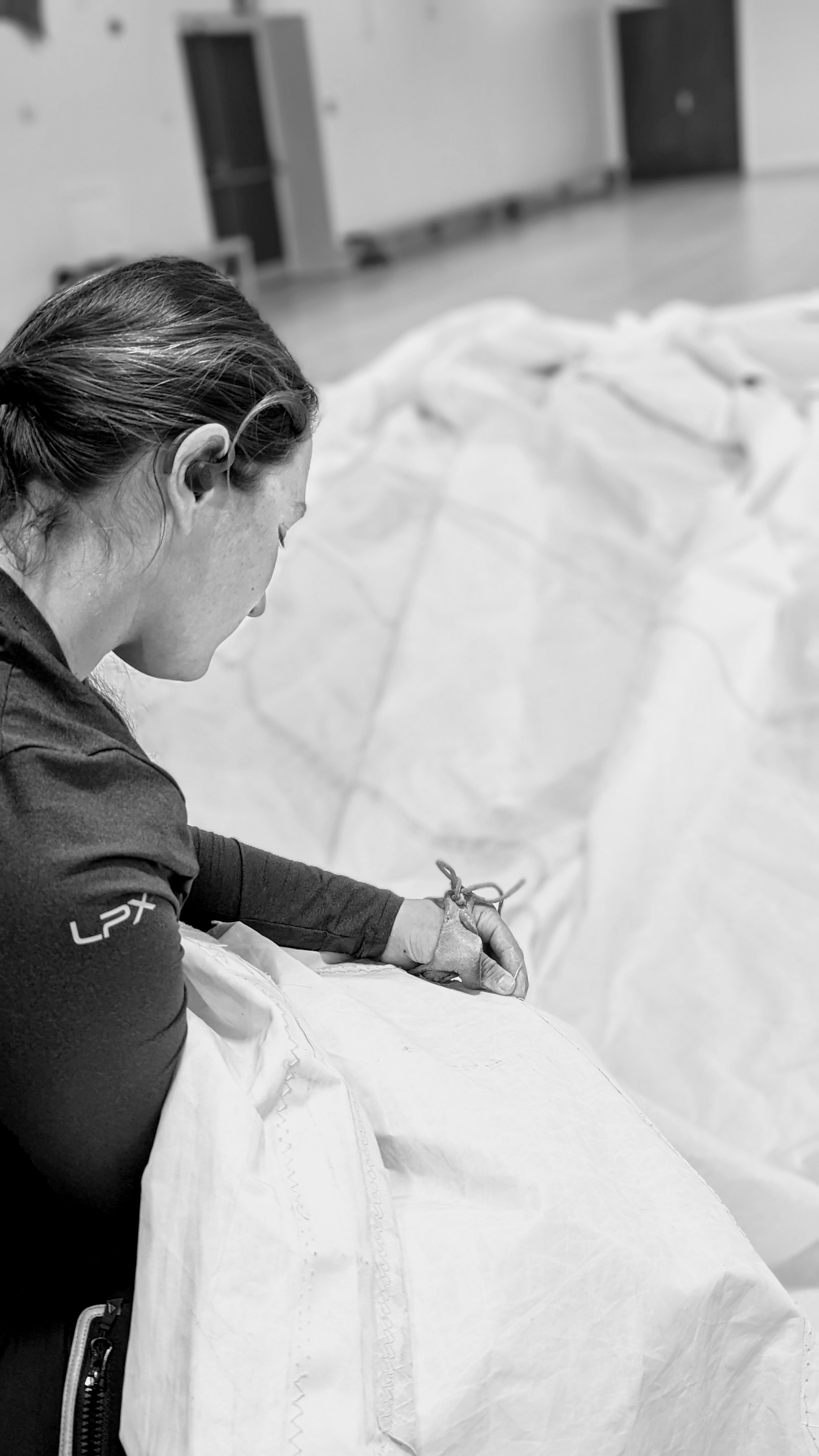
With the timeline short already, the aim was to get the boat onto the cargo ship, sailing to Montevideo, close to the start of the race and finish the build there. This changed when the ship was unable to clear unloading the boat in Uruguay – therefore the boat would have to be ready to sail. This put a great deal more pressure on the team, and pressure to get everything done as quickly as possible. Now local celebrities (or oddities) the guys at the dock were fantastic, despite us causing them a great deal of hassel and in days we were ready to go. As a team it was long days. For lifts of the rig and the boat, we were often up at 4-5 in the morning and working till late to finish the work on the boat, but it was all good learning, taking the worse situation and making it work.
Finally, Translated 9 was smoothly lifted back into the water and she was off, a small delivery crew to get here to Punta Del Este safely, where work to continue to get her race ready would start. It was great to see her sailing despite everything that had happened. I had made the decision to step off the boat for the final leg, but proud of my involvement in getting her back sailing. We also got to explore the Falklands a litte, somewhere I never thought I would visit – I am going to miss the penguins!
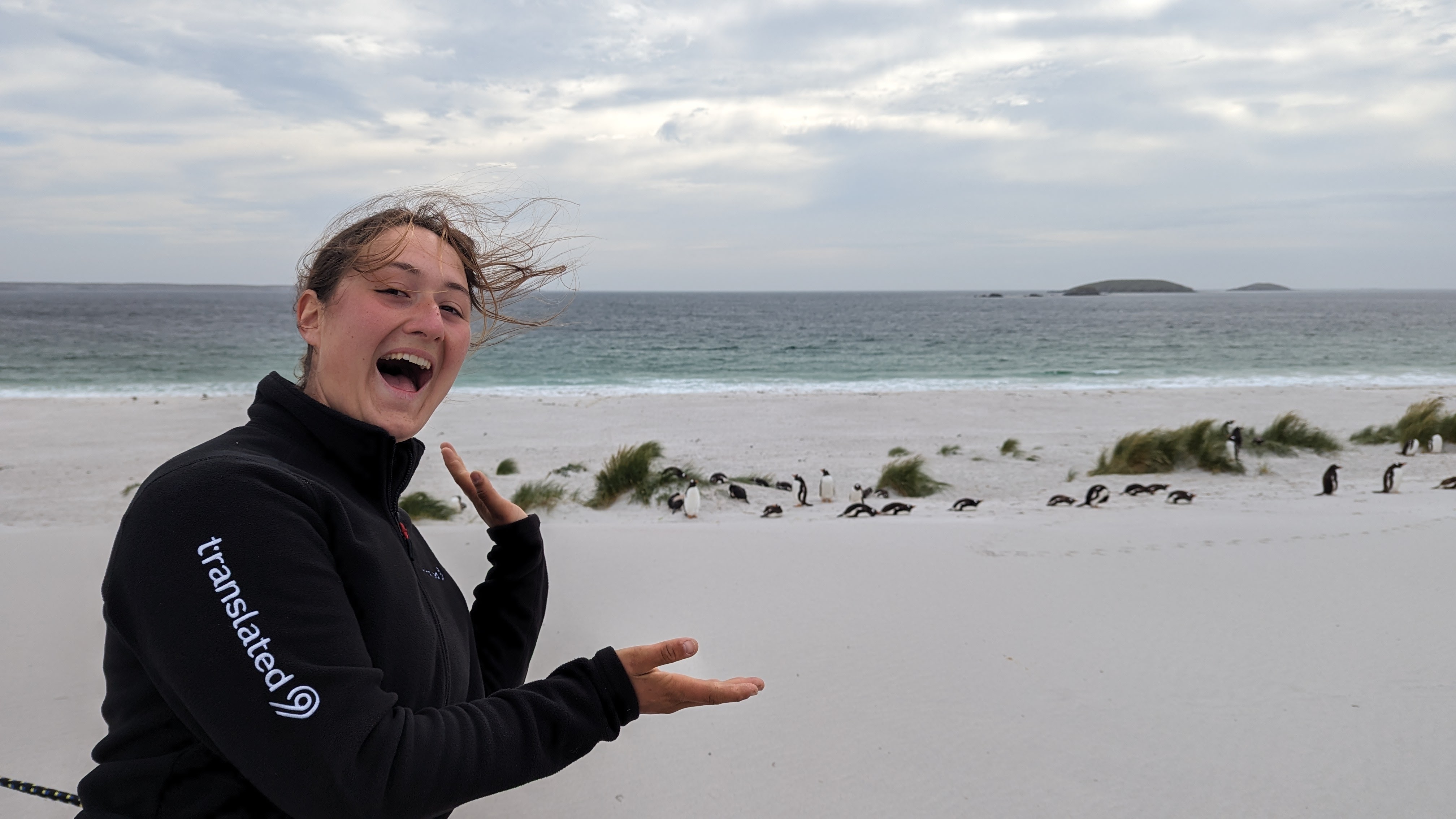
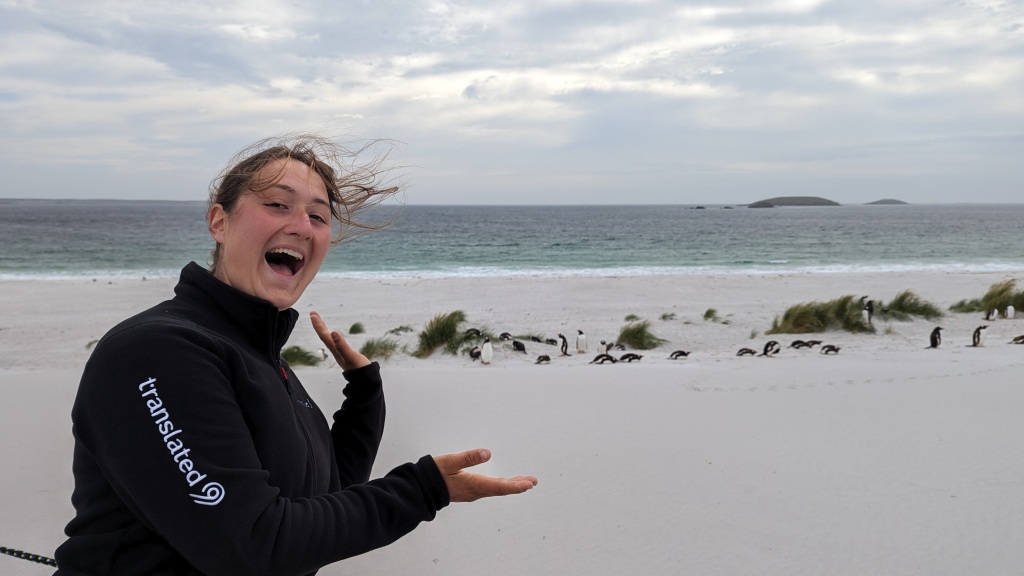
Leave a comment